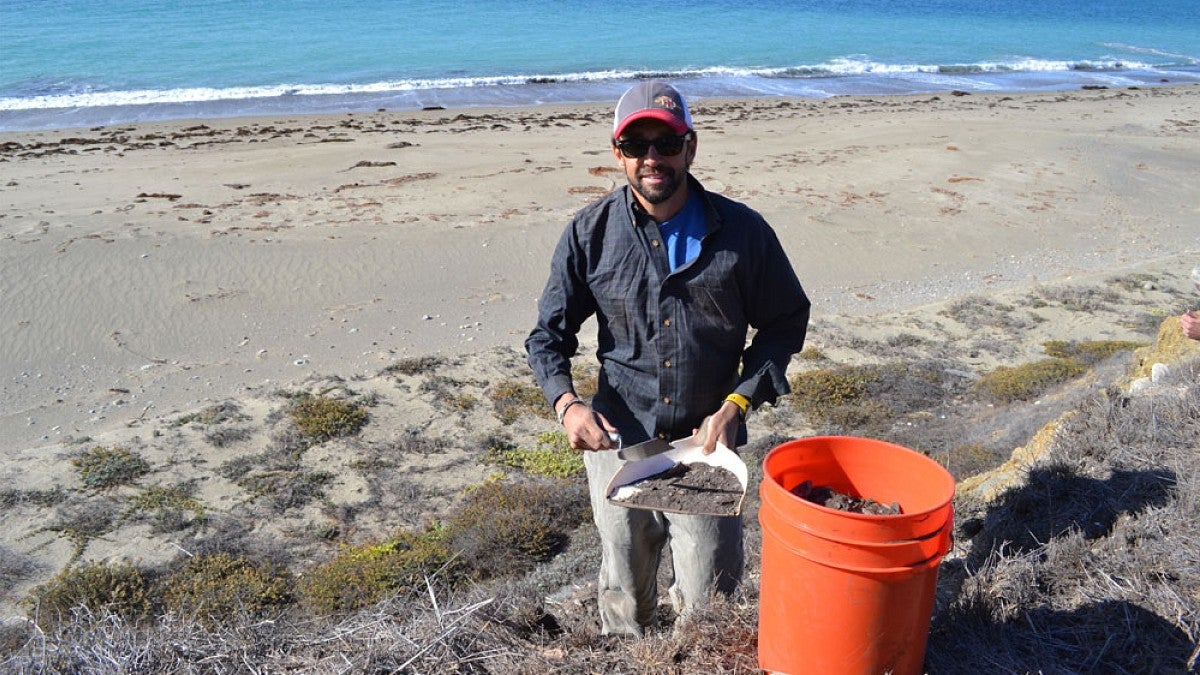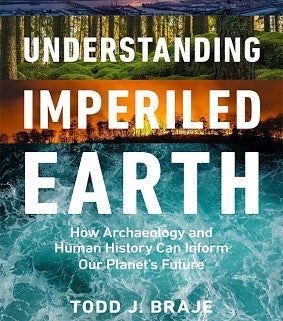
Experiential Learning | Research & Innovation | Community Impact | Career Preparation | Teaching Excellence | 21st Century Liberal Arts | Building Community | Good Vibes | CAS Spotlights | All Stories | Past Issues

April 26, 2024
‘Understanding Imperiled Earth' digs deep to guide climate action
A few days after Paris’s Notre Dame burned in 2019, Bertrand de Feydeau, vice-president of preservation Fondation du Patrimoine, told news outlets that there weren’t enough large trees in Europe to accurately reconstruct the cathedral’s roof.
That’s the moment when Todd Braje (PhD, anthropology, ’07) saw how humanity’s history is connected to climate change, inspiring him to write his newest book, Understanding Imperiled Earth: How Archeology and Human History Can Inform Our Planet’s Future.
“This hot-button news event is a story about European deforestation that started 8,000 to 10,000 years ago,” Braje says. “To really understand why it's going to be so difficult to reconstruct Notre Dame's roof, you have to go back to the spread of agricultural communities around Europe and the massive deforestation that followed and accelerated through time.”
Braje, who’s the executive director of the Museum of Natural and Cultural History on the University of Oregon campus, uses an archeological approach to examine humanity’s history for ways to address climate change.
After 10 years as a professor at San Diego State University, Braje returned to his alma mater in 2023 to lead the museum. Braje has authored or co-authored four books, one edited volume, and more than 100 peer-reviewed articles and book chapters. Understanding Imperiled Earth is his foray into writing for a more general audience.

Braje begins each chapter with a news event and then goes back in history, weaving through paths to find solutions relatable to the climate crisis. Taking readers through these relatable and visible problems is a way to make climate solutions more comprehensible and show how issues are interconnected.
“When you reforest the world, you accelerate or preserve biodiversity, and increase biodiversity,” Braje says. “When you address climate change and slow that rate of anthropogenic warming, you're helping landscapes and species recover.”
A lot of data on deforestation and species diversity has been collected over the past 50 to 100 years. Humans have already degraded the planet during that time, including the Industrial Revolution, widespread deforestation, rampant overhunting, and many other devastating impacts on the natural world.
If that is the baseline for recovery and restoration, you are essentially aiming to reclaim an already diminished state, Braje says. Instead, our goal should be to understand pre-industrial levels of biodiversity and ecosystem function and strive for restoration to that baseline, acknowledging that it may not be fully possible but can guide us towards more ambitious and ecologically meaningful targets.
Digging deep into the past with an archeological lens is a way to uncover what the planet was like before major human impacts. It’s a way to understand what kinds of tree species there were, what the distribution of those trees was like, and the sort of biodiversity that existed in those environments. And from there, it’s possible to calculate how much carbon dioxide and methane were released into the atmosphere from deforestation.
“We have all the tools that we need to address the environmental crisis, problems of deforestation and anthropogenic-caused climate change and declining biodiversity,” Braje says. “We have the tools at hand. We don't need technology to save us. We just need the collective will and collective action to implement more sustainable and resilient strategies.”
Braje’s book researches the past to find what can be applied in today’s world to make a difference.
“It’s a lesson of hope,” Braje says. “We don't need some technophile, some future carbon capture technology to save us. We can save ourselves.”
—Henry Houston (MA, ’17, international studies) is a communications coordinator for the College of Arts and Sciences.
